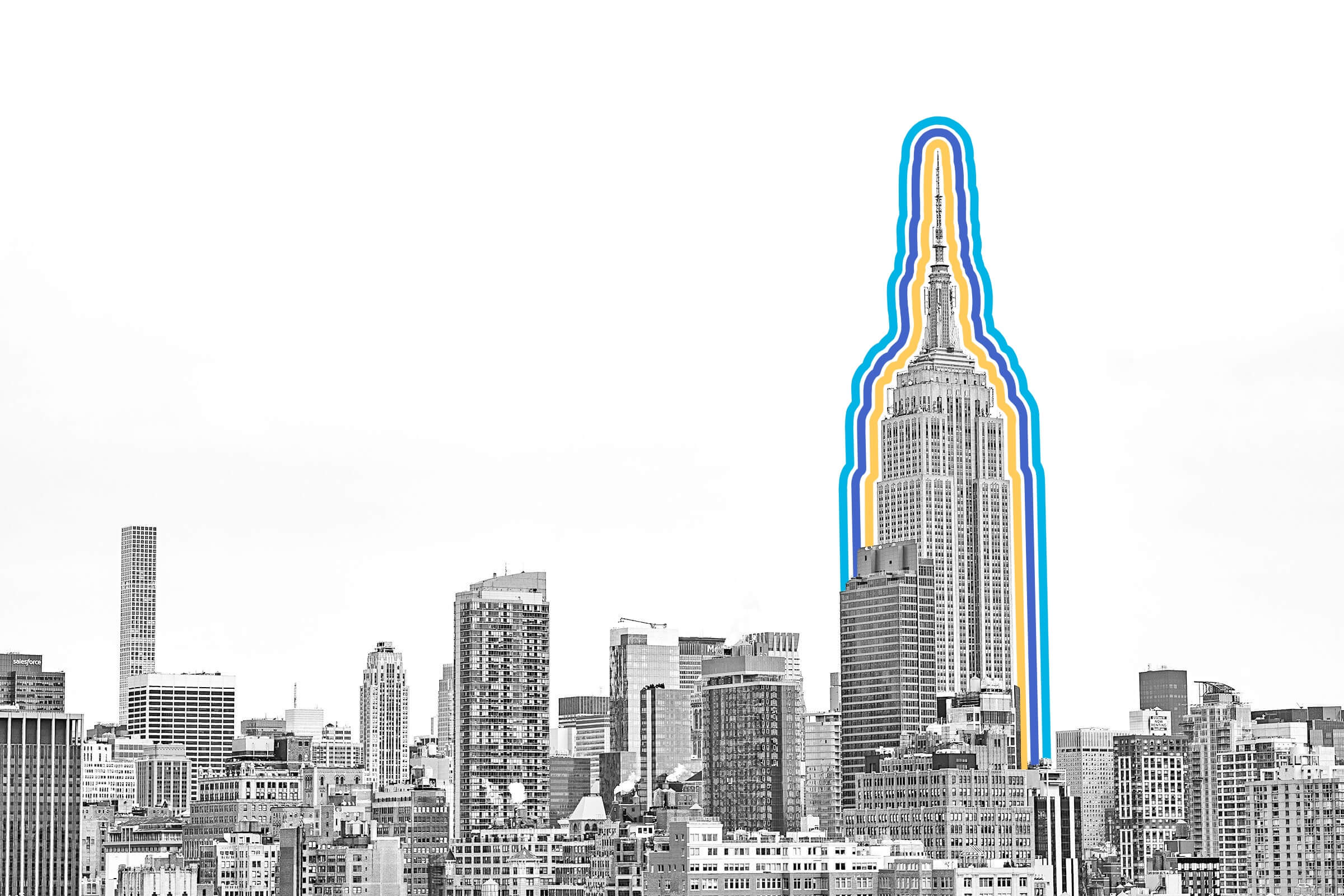

In a metropolis filled with architectural marvels both new and old, the Empire State Building still carries major clout as a defining landmark of New York City. Whether it’s because of the classy art deco design, the attention-grabbing light displays, or the far-reaching views offered from its observation decks, the Great Depression-era skyscraper remains a top tourist attraction and one of the most photographed buildings in the world. Here are six facts you might not know about the longtime stalwart of 34th Street and Fifth Avenue in Manhattan.
The Empire State Building Was Built in 410 Days

The brainchild of financier John J. Raskob, the Empire State Building was conceived at a time when multiple developers were racing to leave their imprint on the New York City skyline — and it became a reality with mind-boggling speed. Fueled by the labor of as many as 3,400 daily workers, the structure climbed off the ground at a peak rate of 4.5 stories per week following its formal groundbreaking on March 17, 1930. Remarkably, the massive building — comprising 60,000 tons of steel, 200,000 cubic feet of Indiana limestone and granite, 730 tons of aluminum and stainless steel, and 10 million bricks — was completed ahead of schedule (and below budget) after just 410 days. President Herbert Hoover officially dedicated the new skyscraper on May 1, 1931.
The Empire State Building Was the Tallest Building in the World for Four Decades

Although it's since been dwarfed by giants such as the United Arab Emirates' 2,720-foot Burj Khalifa, the Empire State Building once set the standard for human ambition to reach for the skies. At 102 stories and 1,250 feet tall (not counting the later addition of an antenna, which added 204 feet), it was the first building to pass the 100-story mark, and its height easily surpassed the 1,046-foot record previously established by the Chrysler Tower in 1930. The Empire State Building remained the world's tallest building until the 110-story Twin Towers of Lower Manhattan's World Trade Center both pushed past 1,360 feet in the early 1970s.
The Empire State Building Has Its Own Zip Code

Since May 1980, with the designation of the skyscraper’s very own 10118 ZIP code, the Empire State Building’s tenants have enjoyed the postal privileges of a small city. This was the result of an effort to speed up mail delivery in Manhattan by giving higher-volume areas their own digits. Of the 63 new ZIP codes introduced in the borough that year, 39 were buildings that received at least 5,000 pieces of mail per day. The Empire State Building easily surpassed that cutoff with a daily intake of 35,000 pieces of mail.
The Building’s Colorful Light Displays Began in 1976

Among the Empire State Building's famed features are the crowning lights that frequently change colors to honor cultural events, organizations, and local sports champions. The building first shone a beacon following Franklin D. Roosevelt's presidential election in November 1932, but the multicolored displays that New Yorkers have come to know and love date back to the red, white, and blue bicentennial celebration of July 1976. The lights have since flashed in a range of colors, such as pink to commemorate Breast Cancer Awareness Month, blue for Frank Sinatra's 1998 death, and even neon green in 2009 for the 25th anniversary of the first Teenage Mutant Ninja Turtles comic book. The building switched to LED lights in 2012, giving operators the ability to choose from 16 million colors and add special effects like ripples, sparkles, and strobes.
Competitors Race to the Top in the Annual Empire State Building Run-Up

For those with energy to burn (and maybe a masochistic bent), the Empire State Building Run-Up offers runners from around the world a chance to scale the majority of the skyscraper by foot. An annual tradition since 1978, the Run-Up covers 1,576 steps over 1,050 vertical feet, from the lobby to the 86th-floor observatory. The fastest record for what is billed as "the world’s first and most famous tower race" was set by Australian Paul Crake, who completed the grueling climb in nine minutes and 33 seconds in 2003. And while that's obviously slower and more strenuous than the sub-minute it would take to ride an elevator, it does hold some appeal, given the lines to visit the observatory stretch the average elevator wait time to upwards of 45 minutes.
It's Been Featured in More Than 250 Movies

As one of the world’s most famous structures, the Empire State Building has made numerous appearances on the big screen. Just how many is impossible to determine, considering the number of low-budget films that fly under the radar, but the Empire State Building's website once cited an estimate of "more than 250 movies." The most famous ones include King Kong (1933), which features the titular ape swatting at planes from the newly completed skyscraper; Independence Day (1996), which sees the Empire State Building destroyed by a giant alien spaceship; Sleepless in Seattle (1993), which features an unforgettable meeting between the main characters in the film’s finale; and Andy Warhol's Empire (1965), which focuses solely on the iconic building over the course of its eight-hour run time.
